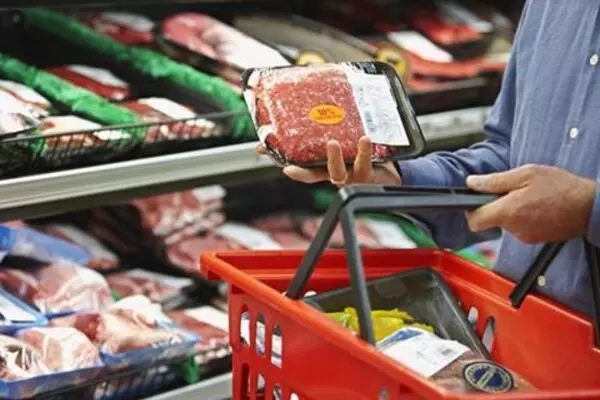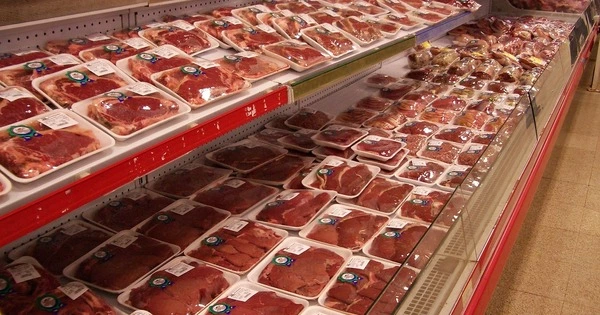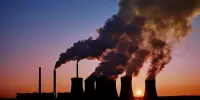According to two comprehensive studies published in 2021, the food we eat is responsible for an astounding one-third of global greenhouse gas emissions caused by human activities.
“When people talk about food systems, they always think about the cow in the field,” says statistician Francesco Tubiello, lead author of one of the studies published in Environmental Research Letters last June. True, cows contribute significantly to methane emissions, which, like other greenhouse gases, trap heat in the atmosphere. However, methane, carbon dioxide, and other greenhouse gases are released from a variety of other sources throughout the food production chain.
Before 2021, scientists like Tubiello of the United Nations Food and Agriculture Organization were well aware that agriculture and related land use changes accounted for roughly 20% of global greenhouse gas emissions. Such land use changes include clearing forests for cattle grazing and pumping groundwater to flood fields for agricultural purposes.
However, new modeling techniques developed by Tubiello and colleagues, as well as a study conducted by a group at the European Commission with whom Tubiello collaborated, revealed another major source of emissions: the food supply chain. All of the steps involved in getting food from the farm to our plates to the landfill — transportation, processing, cooking, and food waste — increase food-related emissions by 20 to 33 percent.
To slow climate change, the foods we eat deserve major attention, just like fossil fuel burning, says Amos Tai, an environmental scientist at the Chinese University of Hong Kong. The fuller picture of food-related emissions demonstrates that the world needs to make drastic changes to the food system if we are to reach international goals for reducing global warming.
Scientists have gained a better understanding of global human-related emissions in recent years thanks to databases such as the European Union’s EDGAR, or Emissions Database for Global Atmospheric Research.
Change from developing countries
Scientists have gained a better understanding of global human-related emissions in recent years thanks to databases such as the European Union’s EDGAR, or Emissions Database for Global Atmospheric Research. From 1970 to the present, the database covers every country’s human-emitting activities, from energy production to landfill waste. According to Monica Crippa, a scientific officer at the European Commission’s Joint Research Centre, EDGAR uses a unified methodology to calculate emissions for all economic sectors.
Crippa and colleagues created EDGAR-FOOD, a companion database of food system-related emissions, with assistance from Tubiello. Using the same database as Tubiello’s group, the researchers arrived at the same one-third estimate.
Crippa’s team’s calculations, reported in Nature Food in March 2021, split food system emissions into four broad categories: land (including both agriculture and related land use changes), energy (used for producing, processing, packaging and transporting goods), industry (including the production of chemicals used in farming and materials used to package food) and waste (from unused food).

According to Crippa, the land sector is the most responsible for food system emissions, accounting for roughly 70% of the global total. However, the picture differs depending on the country. Because the United States and other developed countries rely on highly centralized megafarms for a large portion of their food production, the categories of energy, industry, and waste account for more than half of these countries’ food system emissions.
Agriculture and changing land use are far greater contributors in developing countries. Emissions in historically less developed countries have also been rising in the last 30 years, as these countries have cut down wild areas to make way for industrial farming and begun eating more meat, which is another major contributor to emissions that has an impact on all four categories.
As a result, agriculture and related landscape shifts have driven major increases in food system emissions among developing countries in recent decades, while emissions in developed countries have not grown.
For instance, China’s food emissions shot up by almost 50 percent from 1990 to 2018, largely due to a rise in meat-eating, according to the EDGAR-FOOD database. In 1980, the average Chinese person ate about 30 grams of meat a day, Tai says. In 2010, the average person in China ate almost five times as much, or just under 150 grams of meat a day.
Top-emitting economies
In recent years, Crippa says, six economies, the top emitters, have been responsible for more than half of total global food emissions. These economies, in order, are China, Brazil, the United States, India, Indonesia and the European Union. The immense populations of China and India help drive their high numbers. Brazil and Indonesia make the list because large swaths of their rainforests have been cut down to make room for farming. When those trees come down, vast amounts of carbon flow into the atmosphere.
Because of their high meat consumption, the United States and the European Union are on the list. Meat and other animal products account for the vast majority of food-related emissions in the United States, according to Richard Waite, a researcher at the World Resources Institute’s food program in Washington, D.C.
In the United States, waste is also a major issue: According to a 2021 report from the United States Environmental Protection Agency, more than one-third of food produced is never consumed. Food that goes uneaten wastes the resources used to produce, transport, and package it. Furthermore, uneaten food ends up in landfills, where it decomposes and emits methane, carbon dioxide, and other gases.
















